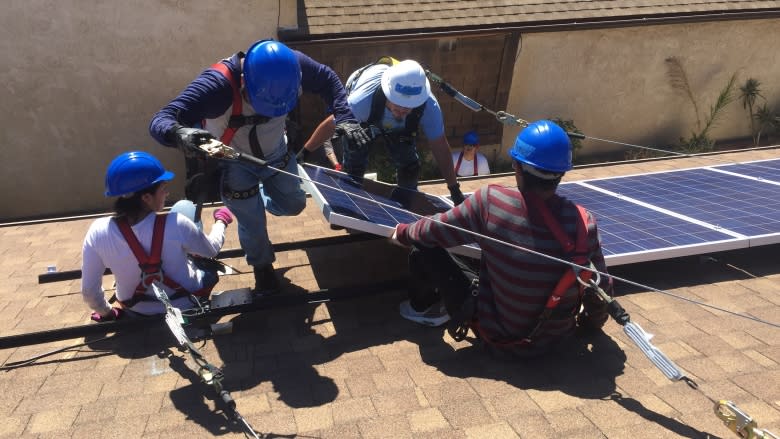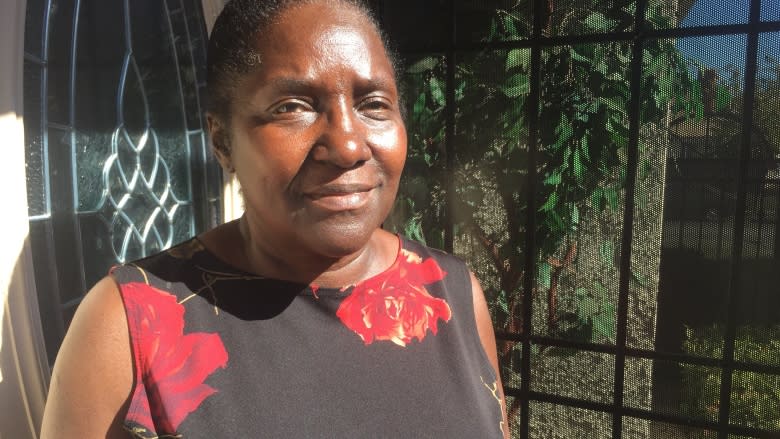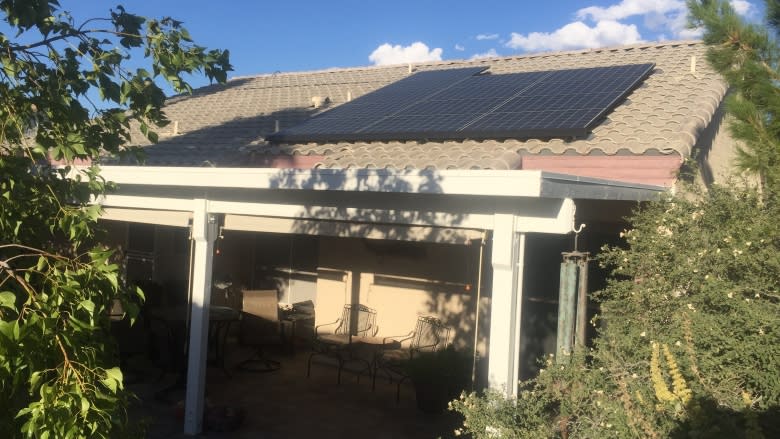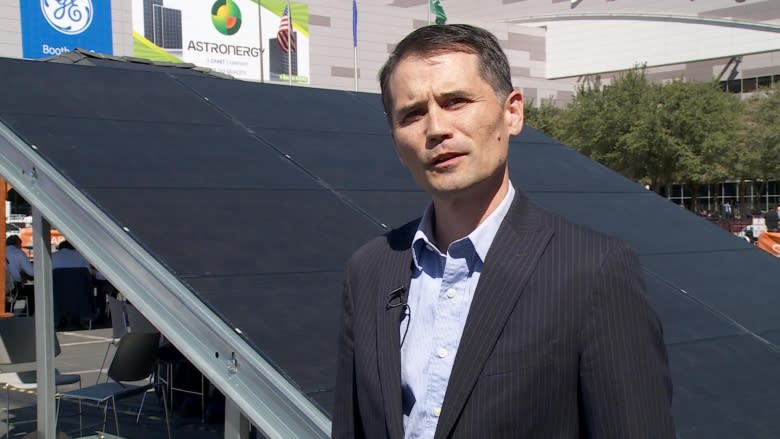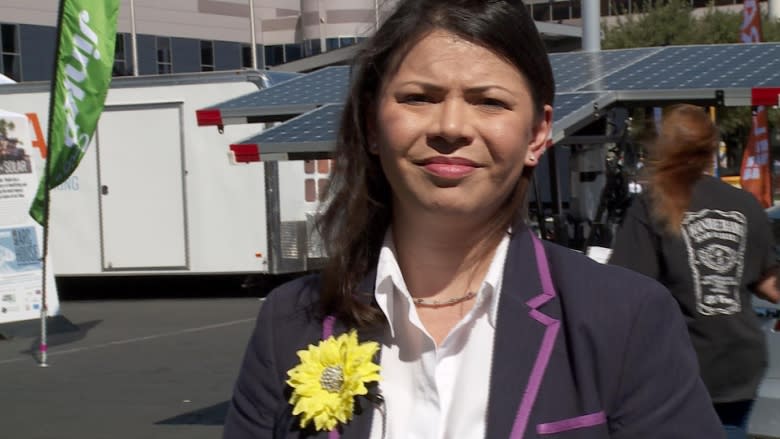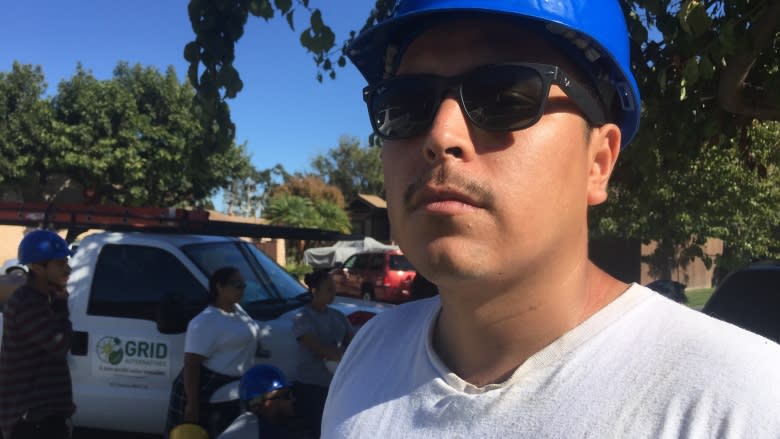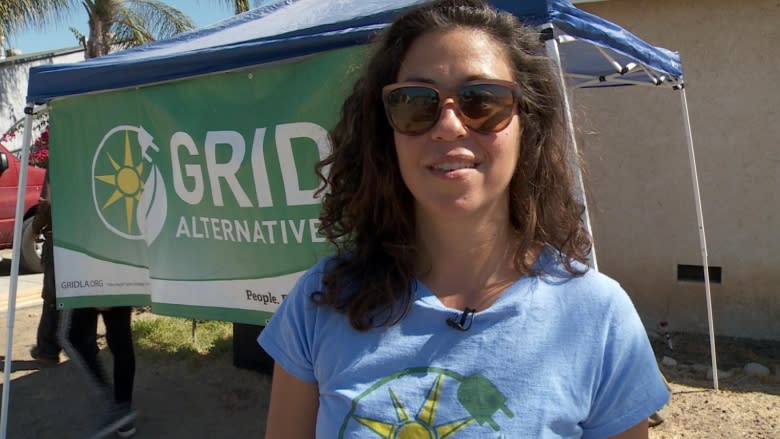Low-income families join solar revolution with help of California NGO
If you were to make a list of the poorest areas in Los Angeles, somewhere on that list would be Bertha Dortch's neighbourhood in Inglewood. The 68-year-old is on a fixed income, but she's chosen to take in her great-granddaughter and two foster children. On hot days, she faces difficult choices — does she keep the house cool, or buy groceries?
"Our electric bill was going sky high and I really couldn't turn the air conditioning on," Dortch says.
Now, her monthly energy bill is about to drop by more than a quarter. She's getting solar panels installed on her bungalow, for free, under a state-funded program paid for by California's cap-and-trade revenues.
A pair of volunteers hauls a solar panel up to another group waiting on the roof. They belong to an NGO called Grid Alternatives, which recruits volunteers to help implement California's $162-million Single-family Affordable Solar Homes incentive program.
Why should solar only benefit the wealthy?
That means lower electricity costs for participating households, which must be in disadvantaged neighbourhoods.
Before he became a Grid Alternatives solar installation supervisor, Nicolas Gomez worked for the country's largest solar installer. He says he spent most of his time putting up panels in wealthy communities like Palm Springs.
"So staying local right here and installing solar where it makes an impact in my community really means a lot to me," Gomez says. "I just don't see it as a luxury, I see it as the future."
Stan Greshner, one of the organization's vice-presidents, says that, for years, low-income families have been indirectly paying for solar programs through ratepayer fees or taxes, but haven't been able to afford to take advantage of the long-term savings offered by solar.
"It's the right thing to do," Greshner says. "We need to make sure all communities, all families, are part of our nation's transition to a clean energy future and we must now focus on the low-income segment in order for that to be true."
An equity issue
There's another moral argument to be made as well, he says. The fear is, if only the wealthy go solar and pay less toward the electrical grid, then the only people left to pay for it will be those who can least afford it.
"There's an interest in insuring that low-income families are a part of the solution and not the only ones left on the grid to pay for the grid," Greshner says.
He says California will spend about $300 million until 2020 on low-income solar programs, and a few other states like Colorado and New York are investing in similar programs. As well, in August the federal government launched a "solar access for all" initiative to help bring clean power to some of the almost 50 million American households that earn less than $40,000 a year.
From blue-collar to green jobs
"That's around 40 per cent of all U.S. households," Greshner says. "So that represents a huge untapped market for the solar industry."
And developing that untapped market could also help replace lost blue-collar jobs with green ones, according to Melanie Santiago-Mosier, a director with Vote Solar, a California-based NGO that works to expand solar access.
"We're not looking for handouts, but we are looking for things that will address specific barriers," Santiago-Mosier says.
"The solar industry employs almost 210,000 people across the country. That's more people than the coal industry. And so, by bringing solar into lower-income communities we can create pathways for members of those communities to participate in that solar economy."
Going straight with solar
Tethered to a roof, holding a hammer, is Eduardo Garcia, 28, who's volunteering with the team installing Dortch's solar panels. Garcia says he spent most of his childhood in prison for a variety of offences.
"L.A. gangs, you know how it is," Garcia says. "I was really out there in the street and I got picked up for some pretty big cases."
He just got out again and wants to turn things around. A volunteer program called Homeboy Industries is helping him learn the solar trade and build a new life.
"Instead of focusing on the stuff that we used to before, now we're trying to focus on something better, something positive and, besides helping out in the community, help out the world, you know," Garcia says.
"I have a messy background. Most people won't hire me, but you know if I go this route then there's opportunity for us and we'll be able to go back and give a little bit back to the community and employ people."
Although Canada has lagged behind the U.S. when it comes to low-income solar programs, Santiago-Mosier says some provinces are on the right path.
"I know the province of Ontario has actually done quite a few things, Alberta is interested in doing more," she says.
That's why Montreal's Rina Gabbay is in Los Angeles, looking on from below as a Grid Alternatives team scrabbles overhead on a roof in a largely Latino neighbourhood in South Los Angeles. The homeowner, Maria Treho, says she never would have been able to afford a switch to solar had the team not installed it for free.
"I have three kids to take care of and grandkids, so it would be a little expensive for me," Treho says.
It's hearing stories like this that drew Gabbay to the organization. She says she wanted to learn all she could, so that one day she might set up a similar program in Canada.
Of course the weather's a little sunnier in California than it is back home, but she says that's no excuse not to try, pointing to Germany's focus on renewable energy, including solar.
"They have more similar weather to Canada, so if they can do it, why can't we do it?" Gabbay says. "I think it's up to the government to make an allowance for it."
Clarification : An earlier version of this story quoted Rina Gabbay as saying 40 per cent of Germany's energy comes from solar. According to Germany's Federal Ministry for Economic Affairs and Energy, about 31 per cent of the country's electricity comes from renewable sources, and solar power has produced about 40 per cent of its electricity on peak summer days.(Jan 02, 2017 1:13 PM)

